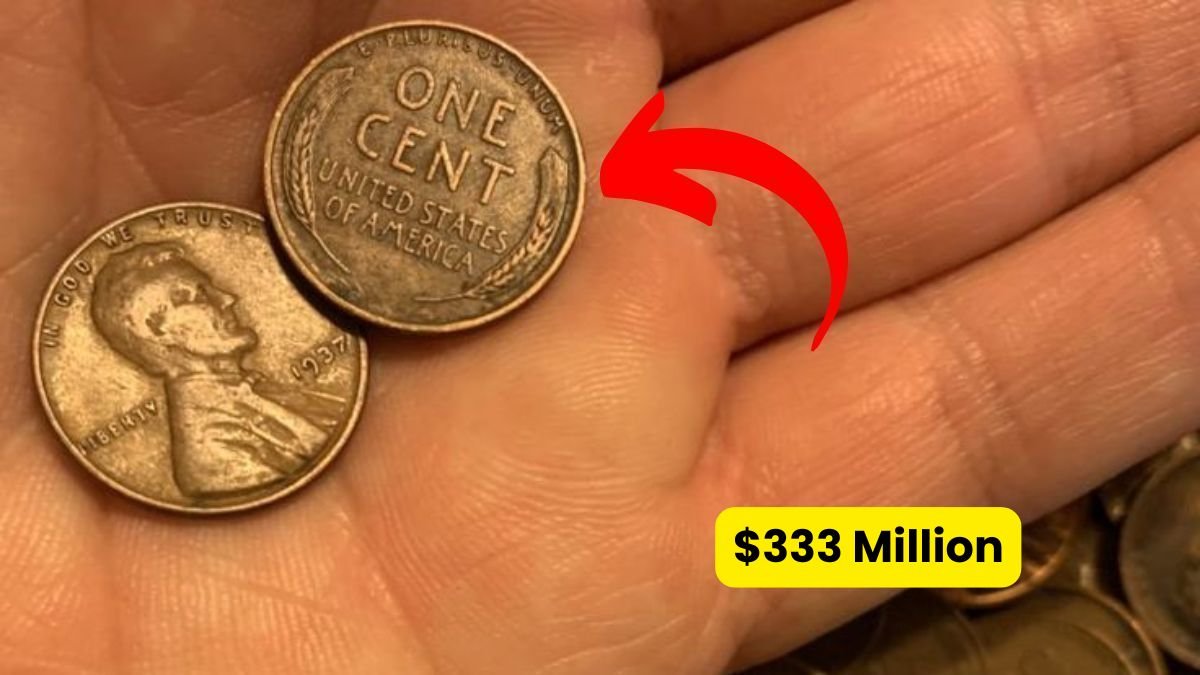Imagine reaching into your pocket for some loose change and pulling out a penny—just one cent—that could be worth more than a private jet, a beachfront mansion, or even a superyacht. Sounds unbelievable, right? But that’s the kind of buzz the legendary $333 million Lincoln Wheat Penny is stirring up in the world of coin collectors and treasure hunters. While it might sound like internet folklore, the idea of a tiny copper coin holding that kind of value keeps curiosity alive—and coin jars across the country under careful watch.
A Look Back at the Lincoln Wheat Penny
The Lincoln Wheat Penny isn’t just any old coin. It first made its appearance in 1909, honoring the 100th birthday of President Abraham Lincoln. Sculptor Victor David Brenner designed this iconic penny, featuring Lincoln’s profile on the front and two wheat stalks framing the words “ONE CENT” on the back—a tribute to America’s agricultural roots. These coins were minted until 1958 before the design was switched to the Lincoln Memorial.
Billions of these pennies were produced over the decades, but not all are created equal. A few rare versions—due to minting errors, limited releases, or historical quirks—are now among the most coveted coins in American history.
What Could Make a Penny Worth $333 Million?
Let’s be clear: no Lincoln Wheat Penny has officially sold for $333 million. But in theory, a coin could reach that kind of value under extraordinary circumstances. Experts suggest that a combination of extreme rarity, historical significance, and minting errors would be required. We’re talking about a one-of-a-kind penny—possibly a misstrike on a rare planchet (metal blank), maybe from a historically significant year, and in near-perfect condition.
Common minting errors that can drive up a penny’s value include:
- Double strikes (where the design appears twice)
- Off-center strikes
- Wrong planchet errors (like a penny struck on a dime blank)
If one coin had all of these features—on top of being from a rare mint year—it could reach an astronomical valuation. That’s the kind of coin collectors dream about.
The Big Names in Rare Wheat Pennies
Some Lincoln Wheat Pennies are already legends:
- 1909-S VDB – Minted in San Francisco with designer initials, this one’s a favorite among collectors. In pristine condition, it can fetch tens of thousands.
- 1943 Copper Penny – During World War II, pennies were made from steel to save copper for the war effort. But a few copper blanks from the previous year slipped through. These mistakes turned into million-dollar treasures.
If the $333 million penny is real, it would likely be an ultra-rare variant of one of these—with an added twist of minting magic.
Could It Still Be Out There?
That’s the question that keeps coin hunters awake at night. And the answer? Maybe. There’s always a chance that an incredibly rare penny is still hiding in someone’s change jar, an old shoebox, or tucked away in a forgotten drawer. Stories of rare coin finds are surprisingly common—and always thrilling.
Over the years, people have stumbled upon valuable coins in everyday situations:
- A Massachusetts man found a 1943 copper penny in his lunch change—it sold for over $200,000.
- A hobbyist discovered a rare 1955 Double Die penny while sorting through rolls from the bank—worth thousands.
The idea that you might unknowingly hold a life-changing coin? That’s what makes this story so irresistible.
What to Look For in Your Pennies
Want to join the hunt? Start by checking any pennies with wheat stalks on the back—they were all minted before 1959. Key things to look for:
- Mint mark – Letters like “S” (San Francisco) or “D” (Denver) under the date can matter.
- Rare years – Watch for 1909-S VDB, 1914-D, 1922 (no mint mark), and especially 1943 copper.
- Unusual features – Use a magnifying glass to find signs of doubling, off-center strikes, or other errors.
- Condition – Pennies in better shape are worth more. Crisp lines, no major wear—these are good signs.
Why So Many People Love Coin Collecting
Coin collecting is more than a hobby—it’s a treasure hunt with a dash of history and art. Every coin has a story: where it’s been, who used it, what era it came from. Even if you never find a million-dollar penny, discovering a coin worth $50, $500, or $5,000 is absolutely possible. And that chance keeps people coming back.
Real-Life Stories That Keep the Dream Alive
There’s no shortage of real-world examples to fuel your inspiration. Take the collector who uncovered a rare coin worth thousands while sorting through a bag of pennies from the bank. Or the young boy who inherited a coin collection from his grandfather—only to find a 1944 steel penny worth six figures.
These stories remind us that incredible finds do happen—and sometimes in the most unexpected places.
Ready to Start Your Search?
You don’t need to be a millionaire or a historian to start collecting coins. All you really need is curiosity. Here’s how to begin:
- Search your change – Focus on pennies from before 1959.
- Get a magnifying glass – Look closely for tiny errors or details.
- Use a guidebook or app – These can help you spot valuable coins quickly.
- Join a coin community – Forums and clubs are full of experts willing to help.
Even if you never come across the $333 million penny, the thrill of searching, learning, and collecting can be a rewarding journey all its own. After all, sometimes the real treasure isn’t just the coin—it’s the story behind it.
